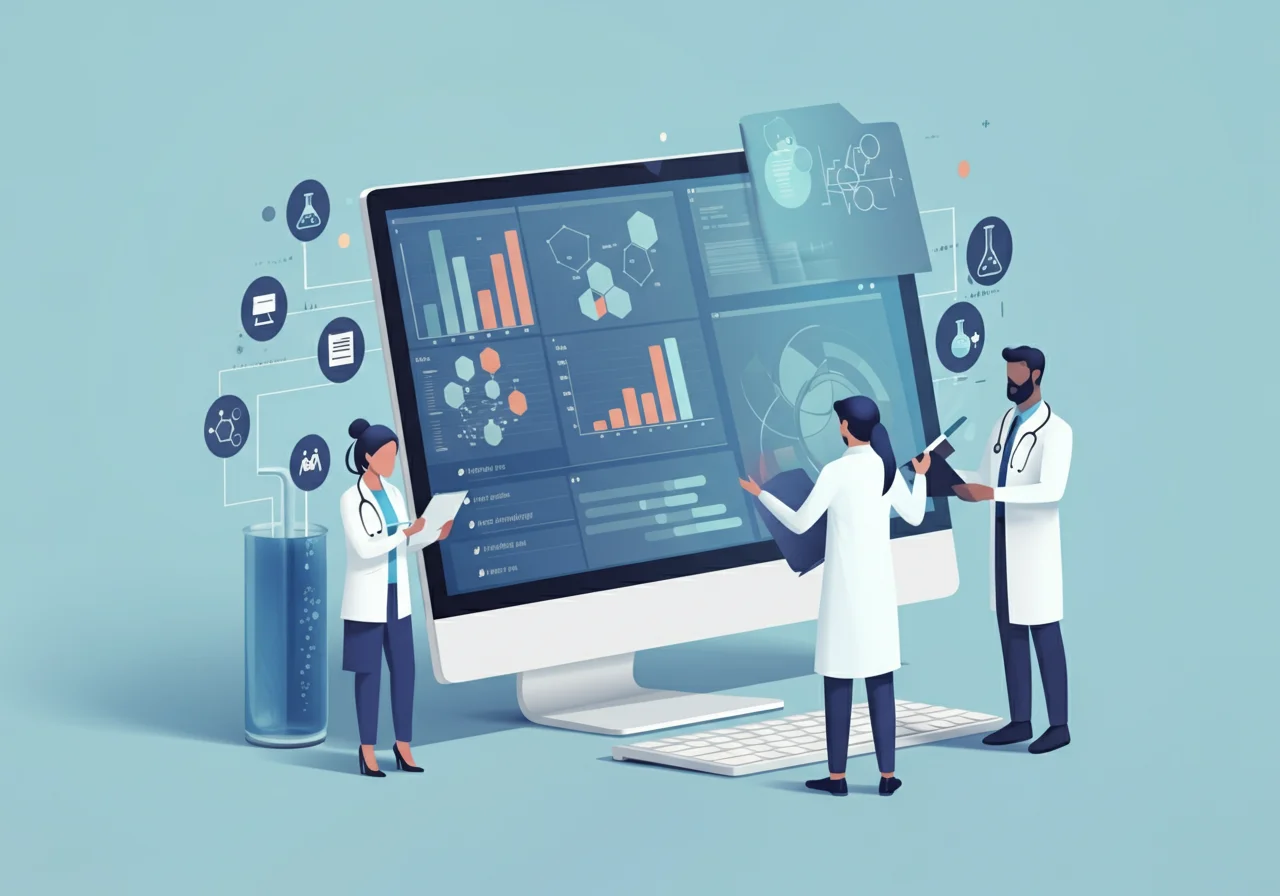Clinical research drives medical breakthroughs, from life-saving vaccines to innovative cancer treatments. Clinical research management software has become essential for organizations looking to streamline complex trial processes, maintain regulatory compliance, and accelerate the path from laboratory discovery to patient care. This guide explores how the right software solutions can transform your clinical trial operations and deliver better research outcomes.
The Complex Landscape of Clinical Research
Running a clinical trial involves orchestrating hundreds of moving parts simultaneously. Research teams must recruit and monitor participants, collect vast amounts of data, ensure protocol adherence, and satisfy strict regulatory requirements—all while managing tight budgets and timelines.
Traditional paper-based systems and disconnected digital tools create significant bottlenecks. Data entry errors can compromise study integrity. Manual tracking of adverse events risks patient safety. Compliance documentation scattered across multiple systems makes audits stressful and time-consuming.
These challenges multiply as trials grow in complexity. Multi-site studies spanning different countries must navigate varying regulatory frameworks. Adaptive trial designs require real-time data analysis to make protocol adjustments. Patient-centric approaches demand sophisticated engagement and monitoring capabilities.
Without integrated technology solutions, research teams spend excessive time on administrative tasks rather than scientific analysis. Delays in data processing slow down decision-making. Disconnected systems prevent effective collaboration between sites, sponsors, and regulatory bodies.
How Clinical Research Management Software Transforms Operations
Modern clinical research management software addresses these pain points through centralized, digital platforms that connect every aspect of trial management. These solutions automate routine tasks, eliminate duplicate data entry, and provide real-time visibility into study progress.
Enhanced efficiency stands out as a primary benefit. Electronic data capture replaces paper case report forms, reducing transcription errors and accelerating data availability. Automated workflows route tasks to appropriate team members, eliminating bottlenecks. Built-in templates and standardized processes reduce the time needed to launch new studies.
Improved data quality protects study integrity. Edit checks catch errors at the point of entry. Automated validation rules ensure consistency across sites. Audit trails track every data change, creating transparency for regulatory reviews. Advanced analytics identify anomalies that might indicate protocol deviations or data quality issues.
Regulatory compliance becomes more manageable with software designed around industry standards like 21 CFR Part 11, ICH-GCP, and GDPR. Electronic signatures meet regulatory requirements while streamlining approval processes. Automated reporting generates submission-ready documentation. Version control ensures teams always work from current protocols and forms.
Better collaboration connects distributed research teams. Cloud-based platforms allow site coordinators, monitors, data managers, and sponsors to access information simultaneously. Real-time updates eliminate version control confusion. Integrated communication tools facilitate quick problem resolution.
Patient safety improves through better adverse event tracking and management. Automated safety alerts notify appropriate personnel immediately. Centralized safety databases enable faster signal detection. Simplified reporting workflows ensure timely submission to regulatory authorities.
Essential Features in Clinical Research Management Software
When evaluating software solutions, prioritize these critical capabilities:
Data Management and Security
Robust data management forms the foundation of any clinical research platform. Look for solutions offering electronic data capture with configurable forms, complex validation rules, and query management workflows. Data should be encrypted both in transit and at rest, with granular access controls ensuring only authorized personnel view sensitive information.
Integration capabilities matter significantly. Your software should connect seamlessly with electronic health records, laboratory information systems, and other data sources to minimize duplicate entry. APIs enable custom integrations with specialized tools your organization already uses.
Regulatory Compliance Tools
Compliance features should be built into the software’s core architecture, not added as afterthoughts. Essential elements include complete audit trails, electronic signatures that meet regulatory standards, and version control for all study documents. The system should support various regulatory frameworks if you conduct international trials.
Automated reporting capabilities save countless hours during regulatory submissions. Pre-built templates for common reports, configurable data exports, and standardized formatting help ensure submissions meet agency requirements the first time.
User Experience and Accessibility
Even the most feature-rich software fails if teams won’t use it. Prioritize intuitive interfaces that minimize training requirements. Role-based dashboards should present relevant information prominently while hiding unnecessary complexity. Mobile accessibility allows site staff to work efficiently whether in the clinic, laboratory, or remotely.
Customization options let you adapt the software to your specific workflows rather than forcing your processes to conform to rigid system requirements. Configurable forms, flexible workflow engines, and personalized reporting ensure the software enhances rather than hinders your operations.
Scalability and Performance
Your software should grow with your organization. Cloud-based solutions offer the most flexibility, allowing you to add users, studies, and data volume without major infrastructure investments. Performance should remain consistent regardless of database size or concurrent user count.
Consider your future needs when evaluating platforms. Will the software support emerging trial designs like decentralized trials or real-world evidence studies? Can it handle the data volume from wearables and other connected devices? Investing in forward-looking technology prevents costly migrations down the road.
Successfully Implementing New Software
Technology alone doesn’t guarantee success. Thoughtful implementation and change management ensure your investment delivers expected returns.
Planning and Preparation
Start with a clear understanding of your current pain points and desired outcomes. Document existing workflows to identify inefficiencies the new software should address. Engage stakeholders across your organization early—data managers, clinical coordinators, IT staff, and principal investigators all bring valuable perspectives.
Develop a phased implementation plan rather than attempting a complete switch overnight. Many organizations pilot new software with a single study before expanding to their full portfolio. This approach allows you to refine configurations and processes with limited risk.
Data Migration Strategy
Moving historical data to a new system requires careful planning. Assess which data truly needs migration versus archival in the old system. Clean and standardize data before transfer to avoid perpetuating existing quality issues. Validate migrated data thoroughly to ensure accuracy.
Maintain parallel systems during transition periods when necessary, but set clear timelines for complete migration. Extended dual operations create confusion and additional workload.
Training and Support
Comprehensive training accelerates adoption and reduces frustration. Offer multiple learning formats—live sessions, recorded tutorials, written guides, and hands-on practice environments. Role-specific training ensures each user learns relevant features without overwhelming them with unnecessary information.
Establish clear support channels for questions and issues. Identify super-users within each team who can provide peer support. Regular check-ins during the first few months after implementation help identify and resolve adoption barriers quickly.
Continuous Improvement
Implementation doesn’t end at go-live. Schedule regular reviews to assess how well the software meets your needs. Gather user feedback systematically and prioritize enhancements accordingly. Stay informed about new features and capabilities your vendor releases—you may already be paying for functionality you’re not using.
Monitor key performance indicators to quantify the software’s impact. Track metrics like time to database lock, query resolution rates, and study startup timelines. Demonstrating measurable improvements helps maintain organizational commitment to the new system.
Investing in Your Research Future
Clinical research management software represents more than a technology purchase. It’s an investment in your organization’s capability to conduct high-quality research efficiently and safely. The right software platform reduces administrative burden on research staff, allowing them to focus on scientific questions rather than paperwork.
As clinical trials grow increasingly complex, manual processes simply cannot keep pace. Regulatory expectations continue to rise. Patient populations become more diverse and geographically distributed. Data volumes expand exponentially with digital health technologies and biomarker assessments.
Organizations that embrace robust clinical research management software position themselves to meet these challenges successfully. They accelerate trial timelines, reduce costs, improve data quality, and ultimately bring beneficial treatments to patients faster.
Take time to carefully evaluate options against your specific needs. Request demonstrations focusing on your most challenging workflows. Speak with existing customers in similar research settings. Consider not just current requirements but where clinical research is heading.
The clinical research landscape will only become more demanding. Equipping your teams with powerful, integrated software solutions provides the foundation for continued success in this evolving environment.

